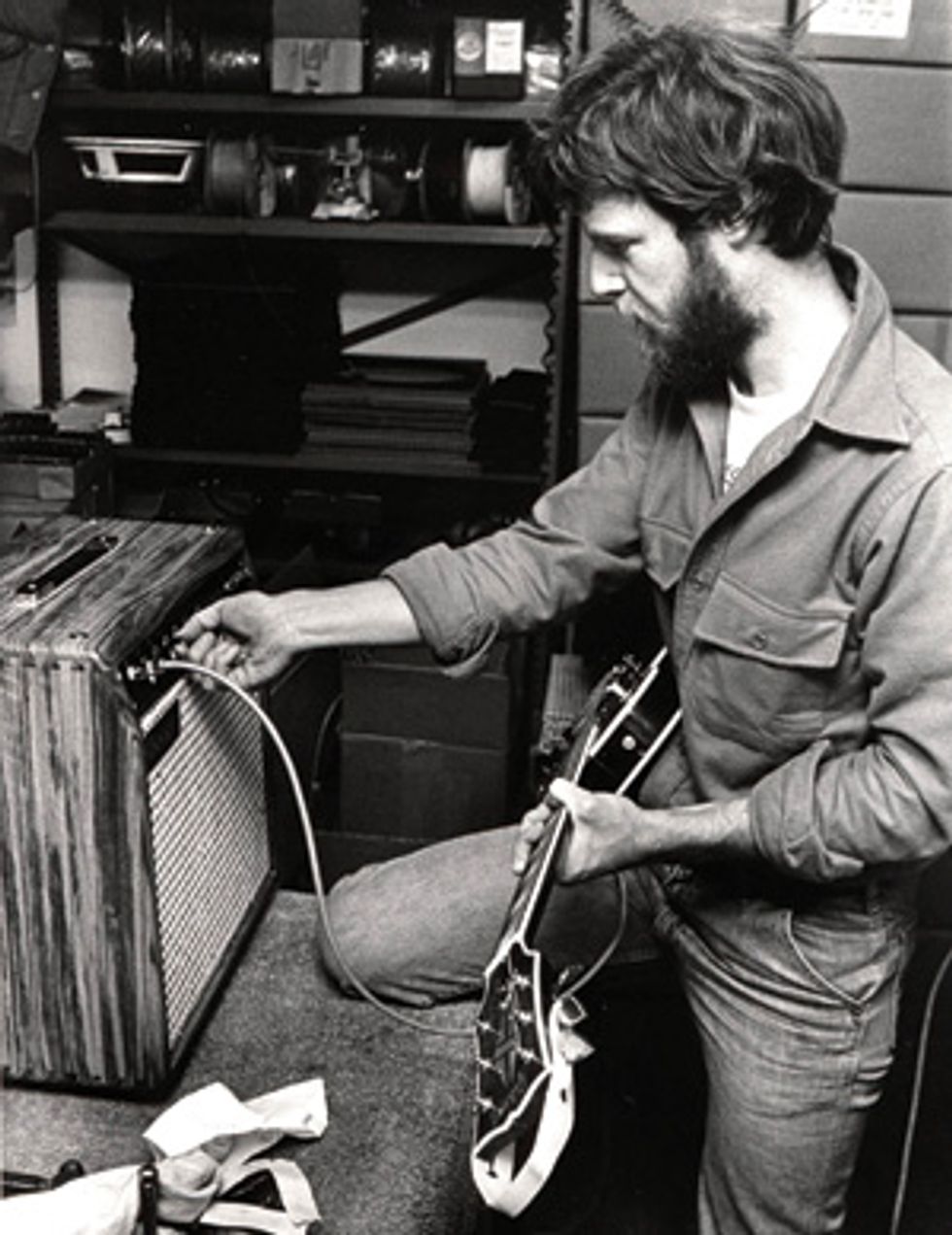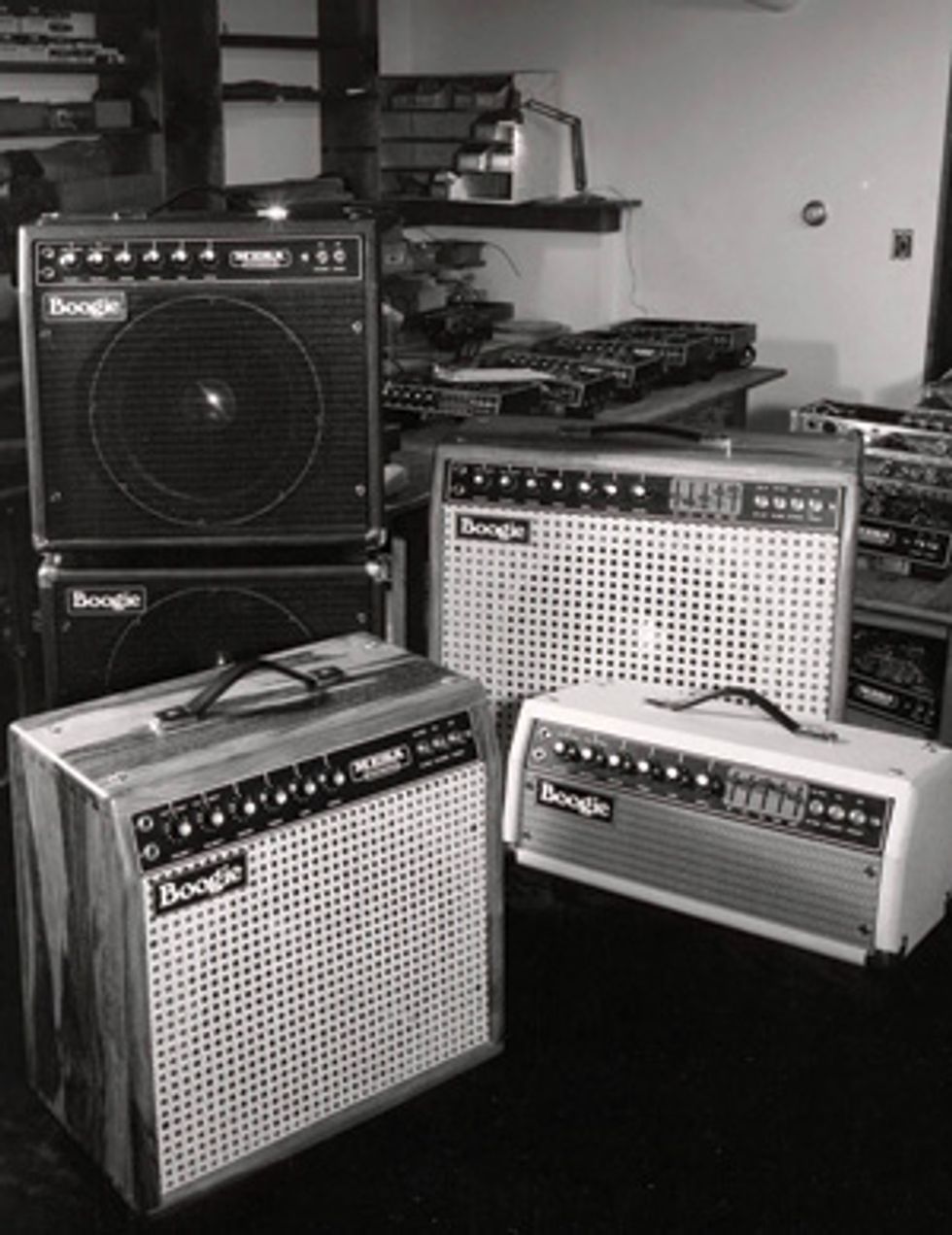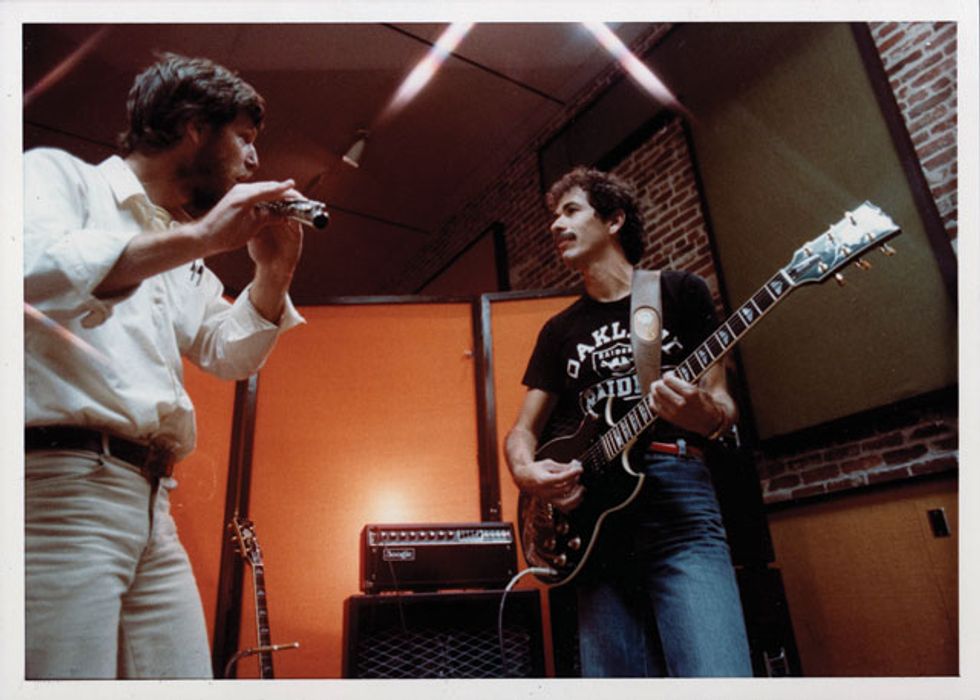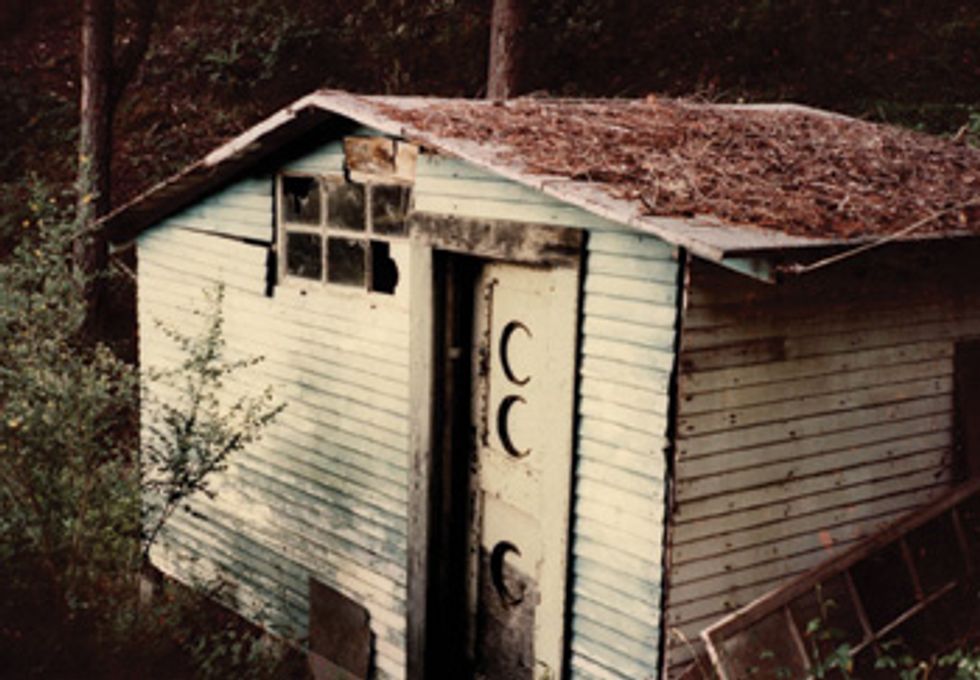From his humble origins repairing amplifiers and other musical equipment inside the confines of a meat locker in a converted Chinese grocery store in Berkeley, California, Mesa/Boogie founder Randall Smith has managed to take his company and his amplifiers to soaring heights and worldwide recognition. For almost 50 years, he’s pushed the envelope of amplification possibilities while continuously creating increasingly durable, versatile, and innovative products.
But despite all that, Smith is quite frankly a lesson in contradictions: He’s one of the industry’s most trailblazing amp designers, and yet he doesn’t play guitar. He’s a businessman who’s not out for the biggest buck, as evidenced by his steadfast refusal to send his manufacturing operation overseas. He’s an old-school, handbuilt kind of guy who simultaneously has an eye further down the road of innovation and new technology. The philosophy he lives by and has instilled in the DNA of his company is quite succinct: “Stay true to the vision, make the best amplifier or product possible, treat each customer as you yourself would like to be treated, and treat your employees the same way. It’s as simple as that.”
Meat-Locker Man
Smith grew up in the Bay Area of Northern
California and, from an early age, developed
two deep passions: music and electronics.
His father was a professional saxophonist
and clarinetist—first chair in the
Oakland Symphony—and early on taught
his son how to play. “One of the first things
my dad taught me when he was teaching
me clarinet and saxophone was tone,”
Smith recalls. “The basis of good horn playing
is long tones. You get used to thinking
about your instrument as your voice.”
For as long as he can remember, Smith has been interested in electronics, and he had a number of mentors throughout his youth who fostered his curiosity in the electrical arts. However, when asked specifically what got him into repairing and working on amplifiers, his answer comes fast and easy, “Being in poverty.” His lifelong work with amps began one eventful evening while playing a gig with some buddies around Berkeley sometime in 1967. “One night, we were playing and the keyboard player’s Sunn 200 amp blew up. I said, ‘Let me have a look at it, maybe I can fix it.’ I saw what was the matter with it, went out and bought some parts, put it all back together, and it worked.”
The keyboard player, Dave Kessner, was thoroughly impressed and, two days later, said he wanted to open a music store and have Smith handle repair duties. Smith thought the idea had some merit and, before long, the two men rented out a converted Chinese grocery store and, voilà, Prune Music was born. The amp maker proudly confides, “My repair shop was in the former meat locker.”
Smith’s reputation as a reliable amp repairman spread like wildfire. In practically no time, the biggest acts around San Francisco—including Country Joe and the Fish, Steve Miller, the Grateful Dead, and Jefferson Airplane—were bringing in their gear. “The fact that I was both honest and reliable meant that I got a lot of good business right away.” Carlos Santana, one of Smith’s earliest and most dedicated customers was quick to recognize this quality in the man. “Randy is impeccable with his integrity, and I’ve never known him to make excuses,” Santana recently told Premier Guitar. “There is not one iota, cell, or molecule of shuck and jive in that dude.”


LEFT Mesa/Boogie founder
Randall Smith gives one of his
early models a test run. RIGHT The
Mark IIC+ was a revolutionary
2-channel invention, but ironically,
Smith says the hair-band
movement of the '80s caused
some to view Mesa as a "hippie"
amplifier-building outfit. His
responses to that were the Dual
and Triple Rectifiers. Photos
courtesy of Frank Bevans
The Fearless Tinkerer
In addition to repairing the amps brought
to him by his loyal clientele, Smith soon
began modifying stock amplifiers. As an
intended joke on Barry Melton of Country
Joe and the Fish, Smith cut up and modified
the guitarist’s Fender Princeton, replacing
the 10" speaker with a 12" JBL D-120,
installing a bigger set of transformers,
and rewiring the circuit to match a tweed
Fender Bassman. The result was a compact
amp with massive amounts of power that
turned the head of pretty much every guitarist
who encountered it.
The day Smith put the amp out on the floor, Santana happened to stop by and became first person to play one of Smith’s creations. “I used to come down the hill to his store, Prune Music, and Randy was in the back making amplifiers,” recalls Santana. “Basically, he was making souped-up little Fender Princetons, and I just noticed that he brought something to the table when it came to enhancing and putting some turbo on amplifiers.” For Santana, playing Smith’s amp was a transformative experience: “I felt like I found what I needed. I needed an amplifier that was not hurtful, but it would sustain. You have to play so loud to sustain. I remember saying to Randy when I first played that amp, ‘Man this thing really boogies! It rocks!’”
Smith took this sustain problem—which seemed to be a ubiquitous issue frustrating guitarists of many stripes—and began trying to come up with a way to address it. “The complaint was, ‘Man, you take a [Fender] Twin, and it’s just way too loud for a medium[-sized] or a small room. I can’t turn it up to the point where it begins to sing,’ or ‘If I have a Princeton or a Deluxe and I take it to a bigger room, it ain’t cutting it—I can’t get a clean sound or even be heard.’ What I saw was this big need to separate the gain characteristics from the volume characteristics,” Smith shares. “I’m not sure I even understood it that well at the time. I knew all the guitar players that hung around our store in Mill Valley kept bringing up this need to get sustain and so forth.”

A young
Carlos Santana jams with Smith
on flute. Smith was musically
trained by his father, who played
saxaphone and clarinet in the
Oakland Symphony. Photo
courtesy of Frank Bevans
Around this time, Smith came across an opportunity that would change the way he thought about what amplifiers were capable of doing and solve the problem of limited sustain. “It was somewhat by accident that this Lee Michaels project came along,” Smith recalls. “The project for Lee was for somebody to make a preamp that would make a solid-state Crown DC300 a great guitar amp.” Michaels had previously hired three companies to assist him in transforming the amp—which was originally intended to power hi-fi stereo and recording units—but to no avail. “I didn’t know how much signal the Crowns needed to drive them, so I thought I’d cover my bases by adding an extra complete stage of tube gain to the basic preamp architecture, adding three variable gain controls at critical points in the circuit.”
The result was a staggering amount of gain that shocked both men. “When he hit that first chord, it blew us through the wall of the studio! It was just, like, ‘What was that?’” After leaving Michaels’ studio, an idea crystallized in Smith’s mind. “I saw that the two of those—the small, high-powered combo and the extra gain—needed to be put together. That was immediately apparent to me—‘I gotta build this circuit with the four 6L6s in a Princeton-sized amplifier.’” The concept of what would ultimately become the Mark I Boogie was born.
At that same time, Smith padded his income by rebuilding Mercedes-Benz engines and jacking up houses in the hills of West Marin. In order to get all the parts he needed for his various projects, he needed an official name for his expansive enterprise. He settled on Mesa Engineering. “It seemed familiar and professional sounding.”

Dubbed the "Home of Tone," Mesa/Boogie's '70s tone shack was a converted doghouse located in the hills of Luganitas. Photo courtesy of Frank Bevans
To suit the diverse needs of his business, he set out in search of more space to build and modify amps. He purchased a converted doghouse in the hills of Lagunitas and dubbed it the Home of Tone. “I had this little mountain-chalet, custom-amp-building deal well under way, and I loved it.”
Mesa’s reputation for high-performance amps spread quickly, with most of the buzz being generated by word of mouth—including by luminaries like Santana.
“I was with Bob Dylan at the Plaza Hotel in New York City, and someone said, ‘Hey, the Rolling Stones are playing tonight—do you want to go there and maybe jam?’’’ Santana recalls. “So me, Bob Dylan, and my snakeskin Boogie amplifier all packed into a cab to get to Madison Square Garden. [When we got there,] they said, ‘Do you want to do “Sympathy for the Devil”?’ I said, ‘Yeah, sure.’ So the Stones did their thing, called me on for an encore, and set up my amplifier. Then Mick Jagger goes, ‘Oh yeah, Santana—take a solo.’ I put my fingers on the guitar and all the heads onstage just turned around like, ‘Damn!’ They started looking at me, looking at my hands, looking at the guitar … and then they looked at the amplifier. The next Rolling Stones tour, there was nothing but Boogies on the stage.”
John Petrucci on Boogies
One of Mesa Engineering’s biggest endorsees is Dream Theater shredmaster John Petrucci, who’s been playing Mesas since he was 18. “Mesa/Boogies always sounded great to me—I just fell in love with them,” he tells Premier Guitar. “The first thing I bought was a Quad Preamp rack, a power amp, and an Abacus [MIDI controller]—all of which I still have. I hooked this system up, and it was the beginning of a real love affair.” But there’s also a deep and abiding platonic love between Petrucci and the Boogie staff. “Those guys have become my brothers and my family,” he says. “From the first call I ever made to Doug [West] when I was just an unknown kid and on through my career, they have been unbelievably supportive beyond anything I can describe.”
Petrucci echoes Mesa founder Randall Smith’s stated MO, “We want to make the ideal amp for every player and for every situation,” when asked specifically what he loves about Mesa gear. “All the amps have their different characteristics going—from a Lone Star to a Road King to a Mark series amp like a Mark V or a Mark II. They are all voiced differently, but they do have this certain Boogie sound. They have the ability to cover a really full and broad range of tones.”
Though he’s owned many Boogies over the years, Petrucci says the Mark V is his go-to amp. “It’s unbelievably versatile,” says Petrucci, “the three different channels and all the variations within those channels—going from cleans to crunch to leads—make it just an amazing amp. And it really authentically and genuinely re-creates the sounds of the amps that came before it. A Mark V in the Mark IV mode sounds exactly like a Mark IV, and the Mark V in C+ mode sounds exactly like a C+. On our last album, I ended up using the Mark V even though I have all those vintage amps in the studio.”
Enter Sandman
Throughout the late 1960s and into the
’70s, despite the small size and limited
reach of Smith’s company, Mesa/Boogie
quickly built a reputation for performance
and exacting standards of quality. “Even
though I was this really tiny, one-man
shop up in the mountains of Northern
California, it didn’t take any time at all
before people started phoning me up.” Over
the next several years in the Home of Tone,
Smith cranked out somewhere in the neighborhood
of 3,000 Mark I amps before relocating
to a factory in Petaluma in 1980. “By
the time we moved Mesa out, that mountain
‘house’ had grown into a 4,000-square-foot,
mini-industrial zone with a woodshop,
an electronics shop, a loading dock, two
offices, and several full-time employees.”
Despite the success of the Mark I, Smith knew there were still plenty of guitarists who wanted more out of their amplifiers, and he began working on a new model to satisfy his customers’ growing list of desires. “I was a little caught off guard when I started making these Mark I’s, because I thought I solved the problem of sustain and gain, but then people said, ‘Can you make it footswitch back to a clean sound?’ So I started working on how to achieve that and found that you really had to swap things around in order to add another master and another gain control—you basically had to have two preamps in one. That was a groundbreaker—to have two preamps that weren’t the same. That really set the mold for amplification and what was expected from that point on, and it caught on really rapidly.”
The end result of that epiphany was the Mark II. But Smith and his clientele still weren’t satisfied. “The Mark II was the first channel-switching amplifier,” Smith says. “Then there was constant need to improve the effects loop, which—again—was a new concept. So the Mark II-B sought to improve upon the effects loop. But they also used a relay that made a huge pop when you footswitched if you didn’t stop playing at the moment you footswitched.” Realizing something had to be done to eliminate that annoying pop, Smith began work on what many consider to be the holy grail of Mesa amplifiers—the Mark IIC+.
“The footswitch pop and the effects loop caused me to rearrange a lot of other stuff in the Mark II-B to try and accomplish that,” Smith confides. “The other thing that happened was that Doug West came on the scene around that same time, so it became a collaborative project between me, Doug West, and Mike Bendinelli. Who could have predicted at the time that it would be such a groundbreaking project? We were just trying to make it sound great and overcome what we saw as some of the shortcomings of the predecessor.”
Judging by the esteem with which the Mark IIC+ is held by so many eminent players, it’s really not a stretch to say it was a revelation to the world of amplification at large. Regardless, as times and styles changed, Mesa found itself in a precarious position in the mid ’80s. “When the whole hair-metal scene was in full swing, the notion of a little Boogie combo was just too friendly and wasn’t threatening enough,” Smith explains. “We realized that and noticed that everyone was into big stacks and big crunch and so forth. I mean, you can crank a IIC+ and get killer crunch—listen to James [Hetfield] and Kirk [Hammett] on Master of Puppets—but it just didn’t look the part. People thought of Boogie as some sort of friendly hippie deal, and it didn’t fit the style.”
So Smith and his team began work on what would become the Dual and Triple Rectifiers. “I came up with the idea of making an amplifier that would be our rendition of a big, monster-metal head. I thought of the idea of putting the diamond plate on the front, which I thought was pretty damn tough. Circuit-wise, it’s pretty evolutionary, where everybody stands on the shoulders of those who preceded them and you can trace the circuitry back to a Fender 4x10 Bassman via Marshall, and so forth. We just put together everything that we knew and were completely blown away by the success of it.”
The positive reaction to the Rectifier line was so immense, in fact, that those who had before considered Mesa a hippie outfit making amps for blues dudes came to regard it as the premier metal amp manufacturer. “It just got so crazy,” Smith laments, “to the point where some people think of us as only a heavy metal amp company. So we have to occasionally remind these doubters that you couldn’t get anybody who has paid more homage to the Fender legacy than us.”
Design Elegance from
Start to Finish
As its founder, Smith is rightfully the
public face of Mesa/Boogie, but he is
quick to point out the impact of other
key personnel. “The bottom line is that
the depth and breadth of talent we have
with everybody collaborating on these
products in the beginning, throughout,
and in the end is staggering.” Smith’s first
employee hire was Mike Bendinelli, who
was put to work immediately on power-supply
boards. Bendinelli continues to
work for the company to this day and is
one of many Boogie employees who have
been with the company for well over two
or even three decades.
Smith says he prizes every employee and the expertise and experience they bring to their position. “[Leader of product development and marketing] Doug West has 31 years, and Mike Bendinelli has got probably close to 40 years,” Smith relates. “And the average lady wiring amps for us has 17 years with the company. Do you think they know how to wire a doggone amplifier after 17 years?” Vice president/cabinet guru Jim Aschow is described as being “absolutely essential,” and engineer Dan Van Riezen has worked tirelessly behind the scenes to bring some of the company’s most intricate and impressive products—such as the Triaxis, Royal Atlantic, and a myriad of hybrid bass gear—to life.
Given the complexity and ingenuity of Boogie designs, it’s no surprise that the processes of brainstorming, prototyping, and producing them are labor intensive. “The way we do it, there are so many different steps of assembling and building an amplifier,” says Smith. “First there is the design and layout of the circuit board, which is integral to the whole thing. On a circuit board—take the Mark V, for example—there are 200–300 little resistors. And we use 1-percent-tolerant resistors so that they are exactly the same. We have an auto-insert machine that puts all those parts on the circuit board. Then the board has a whole bunch of stuff that has to be put in by hand—but even though it’s a hand-done job, there is a machine telling you which part to pick up and where exactly to place it.”
Once the circuit board is complete, it gets put into a handbuilt chassis. “All the potentiometers and the heavy-duty stuff that’s likely to get broken throughout the life of the amplifier is connected by individual ‘flying leads’,” Smith explains. “I used to tell people when I walk around [the shop] that there are at least a thousand mistakes you can make on each amp—so even if you’re 99-percent accurate, an amp could have 10 mistakes in it.” That’s why, after each step in the process, the newest work is checked, rechecked, and then checked again.
Smith is so adamant about this attention to fine details, in fact, that his workers sometimes chide him about being a bit over-the-top. “Everybody at Mesa/Boogie has read the book Options: The Secret Life of Steve Jobs [a satirical biography] and laughed at me, but our neurosis is exactly that. For example, the traces on the bottom side of the circuit board—which nobody can see—not only have to be correct and musically appropriate, but also they have to be beautiful. That’s where the artistry comes in. That’s one of the reasons I still enjoy doing it—because of the satisfaction I get from achieving what I think is artistry in design, even if it doesn’t show.”
Every Player, Every Need
Although it might sound like hyperbole,
anyone who’s looked at the history of Mesa/Boogie still has to admit that it’s never rested
on its laurels. From its genesis facilitating
sustain for blues-rockers to its preeminence among headbangers to its more Fullerton-flavored
Lone Star designs to the 2010
introduction of the chimey-sounding
TransAtlantic series, Smith and Boogie
have always had their eyes to the future.
The latter series first served up the TA-15
as a means to help bedroom and small-club
players achieve great tone without having
to crank an amp to ear-splitting volume. As
Smith pointed out, “Given the economics
of business today, a lot of people needed a
real lightweight travel rig—something under
50 pounds that they can carry with them
and still get their tone.”
Though the TA-15 was inspired by the classic Vox AC15, Mesa took the series beyond that recipe both in terms of what the TA-15 itself can do and in terms of what that new TransAtlantic framework enabled them to do afterward. “In the TransAtlantic, we went beyond Vox in several ways,” Smith says. “First, we gave you the two different gain structures for the Vox channel, plus the ability to switch the master. Secondly, we wanted to give people something that was several amps in one. Once you’ve committed to these expenses of the cabinet, the speakers, the chassis, and the transformers, building more amps on that same platform is really where the value packing comes from.”
Boogie’s new line of overdrive and distortion pedals [reviewed in the January 2013 PG] further exemplify both the company’s adventurous spirit and Smith’s support for the ideas of his team members. The stompboxes—the Tone-Burst, the Grid Slammer, the Flux-Drive, and the Throttle Box—were developed and designed over the course of two years by engineers Dan Van Riezen and Tommy Waugh. “They’re really gratified to see just how readily they are being accepted and all the accolades they’ve received,” says Smith.
In Memoriam: Kurt Houser 1973-2013

Meanwhile, bassists who’ve long heard about the legendarily robust and gritty tones of Mesa’s Bass 400+ tube bass heads will be thrilled to hear that two new bass amps of that ilk are in the works. “It’s been a long and involved process,” says Smith. “The Strategy draws its heritage from the Bass 400+, and the Prodigy is a much smaller version. My thumbnail description of the Strategy is that it’s half the size and half the weight of an [Ampeg] SVT, but it’s half again as powerful—450 all-tube watts vs. the SVT’s 300 watts—but with twice the tone. The Prodigy is smaller than the TA-30, but packs a whopping 250 watts.” Though no release date has been given, the company has already lined up their first endorsee for the new line—Sir Paul McCartney.
Boogie On!
Although Smith was cool enough to pull back
the curtain a bit and give us an idea what’s
next on the bass-amp front, what lies beyond
that for Mesa/Boogie is anyone’s guess. Given
his company’s history, though, it’s probably
safe to bet it’ll be innovative, impeccably
built, and chock-full of great tones. “We’ve
been asked by people, ‘Did you guys ever
think of making a limited-edition, premier,
super-signature model using all of the best
parts and everything?’ And I say, ‘Yeah, that is
what we do. In fact that’s all we do!’”








![Rig Rundown: Russian Circles’ Mike Sullivan [2025]](https://www.premierguitar.com/media-library/youtube.jpg?id=62303631&width=1245&height=700&quality=70&coordinates=0%2C0%2C0%2C0)


























